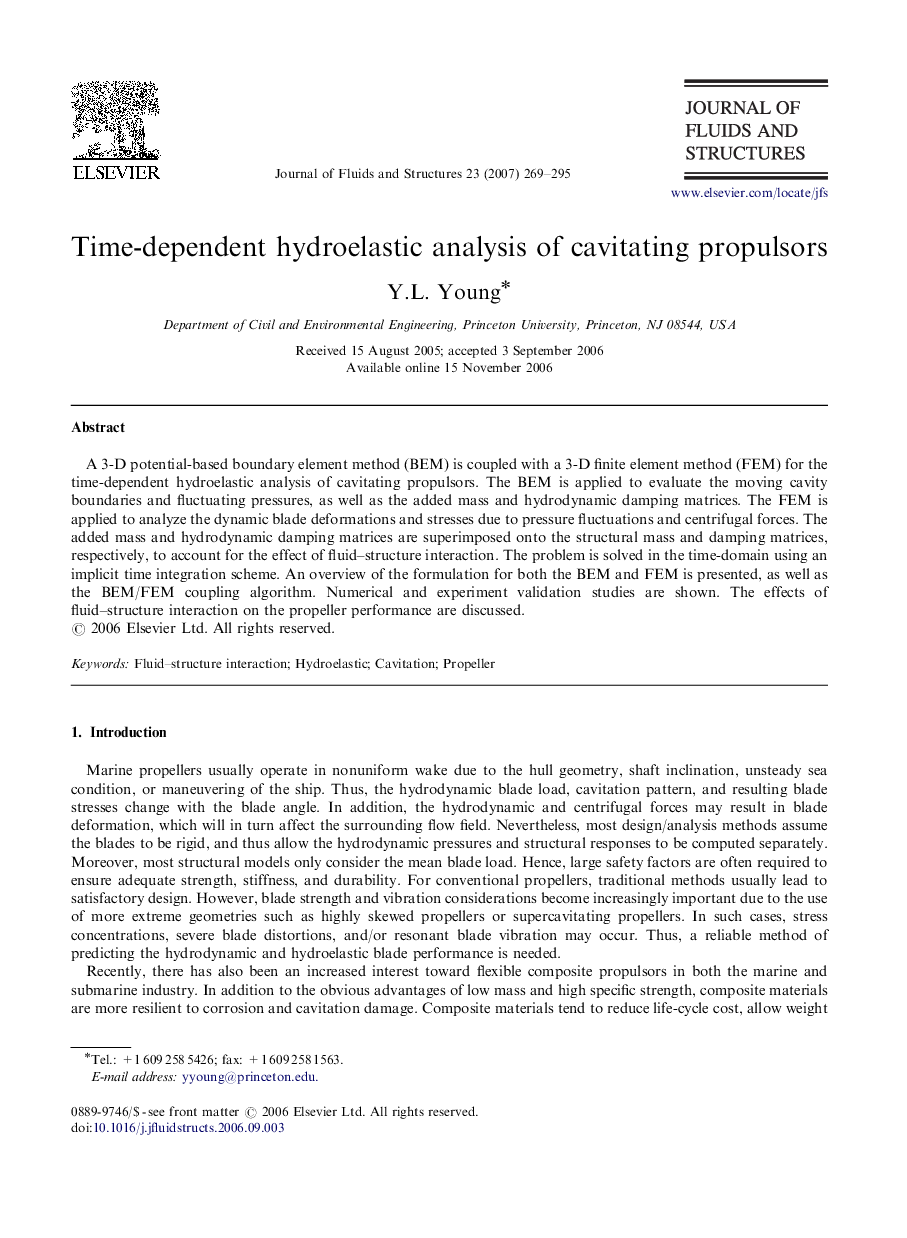| Article ID | Journal | Published Year | Pages | File Type |
|---|---|---|---|---|
| 792700 | Journal of Fluids and Structures | 2007 | 27 Pages |
A 3-D potential-based boundary element method (BEM) is coupled with a 3-D finite element method (FEM) for the time-dependent hydroelastic analysis of cavitating propulsors. The BEM is applied to evaluate the moving cavity boundaries and fluctuating pressures, as well as the added mass and hydrodynamic damping matrices. The FEM is applied to analyze the dynamic blade deformations and stresses due to pressure fluctuations and centrifugal forces. The added mass and hydrodynamic damping matrices are superimposed onto the structural mass and damping matrices, respectively, to account for the effect of fluid–structure interaction. The problem is solved in the time-domain using an implicit time integration scheme. An overview of the formulation for both the BEM and FEM is presented, as well as the BEM/FEM coupling algorithm. Numerical and experiment validation studies are shown. The effects of fluid–structure interaction on the propeller performance are discussed.
